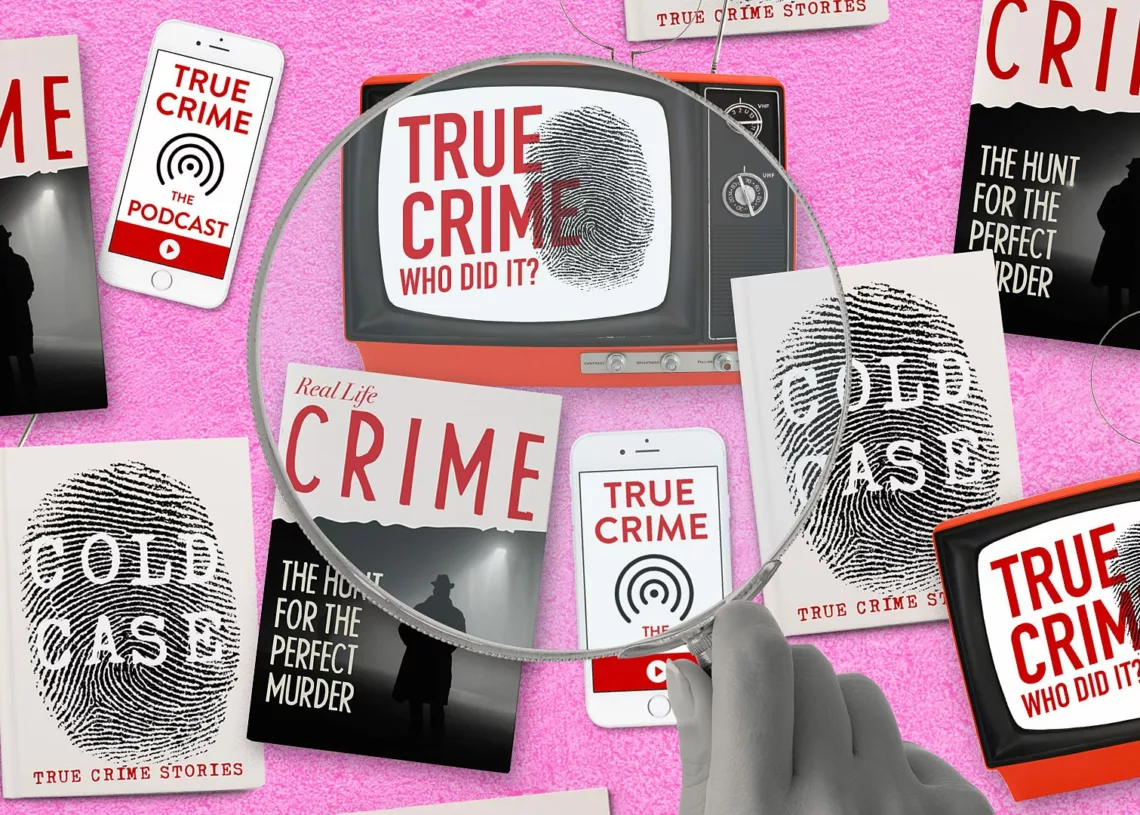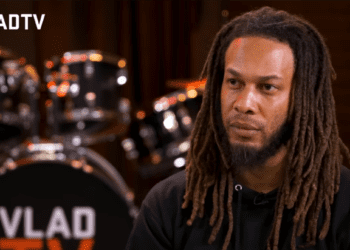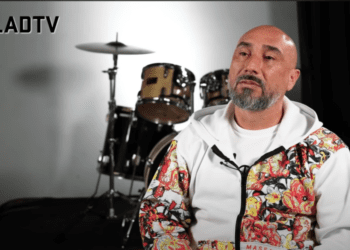Blood, gore, depraved killers, innocent victims – true crime has it all. These horrific tales have always haunted humans across centuries and cultures. But today the genre has exploded, with thousands of documentaries, podcasts and blogs dedicated to real cases. In this lengthy post, I’ll delve deep into the psychology and factors driving our insatiable obsession with these gruesome stories.
A History of Human Fascination
Humans have been transfixed by crimes since the beginning of civilization. In the Middle Ages, thousands would gather in the town square to witness public hangings and decapitations. Leaders would display the severed heads of criminals as a twisted deterrent. Even the most grotesque displays of justice could not satiate the public’s appetite for violence.
Centuries later, old-timey crime pamphlets spreading tales of murderers like Jack the Ripper became popular reading material. Forensic scientist Cesare Lombroso even wrote a “true crime” book titled The Criminal Man in 1876, attempting to identify traits of born criminals.
Of course, today true crime has become a multi-million dollar industry, with entire TV channels like Investigation Discovery feeding our obsession. But the question still remains – why can’t we look away from these horrific acts? What primal curiosity compels us towards darkness?
The Psychology Behind the Allure
Our draw towards true crime likely stems from human instinct developed over thousands of years. Evolutionary psychologists argue we evolved to pay close attention to threats in our midst so we can avoid deadly scenarios. Early humans who ignored dangers like violent tribes or man-eating animals were killed off, while those who were wary passed on their genes.
As a result, we can’t help tuning our ears towards screams and sensing bloodshed. Our ancestors depended on quickly identifying sources of hazard in their midst. The jolt of adrenaline and cortisol kept them alert and ready to either fight or flee threats.
In today’s safer world, we subconsciously seek out that rush of fear and excitement through horror movies, haunted houses, and of course graphic true crime stories. We allow ourselves to confront the darkness from a place of comfort and security. It’s thrilling while still feeling protected, a classic example of risk-taking for pleasure.
“There is a certain thrill in navigating the unknown, an adrenaline rush that comes with each twist and turn in the narrative.”
Detective Work Unveiled
The Puzzle Solvers
One cannot discuss the allure of crime without acknowledging the detective work involved in solving these mysteries. The meticulous process of piecing together clues, analyzing evidence, and deciphering motives provides a unique form of intellectual stimulation. It’s a journey where armchair detectives, like myself, can engage in the thrill of solving crimes without ever leaving the comfort of our homes.
- “The detective work becomes a puzzle, and solving it feels like a victory against the chaos that crime represents.”
Natural Curiosity Run Amok
Our morbid fascination with horrific crimes also stems from basic human curiosity taken to the extreme. While curiosity helped early humans discover new food sources and solutions to dangers, it becomes macabre in the context of true crime.
Something in our nature drives us to peel back the curtain and stare into the abyss. When we hear about depraved acts, we obsessively analyze and speculate. We need to understand motives, thought processes, and backstories even though they are beyond our normal comprehension.
How could a father massacre his entire family? What drives a seemingly normal teenager to become a violent serial rapist and killer? We endlessly ponder the sociopathic and abnormal psychology of criminals who commit heinous crimes. It’s the ultimate paradox – repulsed yet compulsively digging for dark truths.
Natural Justice and Catharsis
True crime also allows us to witness justice being rightly served, delivering immense catharsis. The villains of these tales are not fictional characters, but real humans who committed vile acts against innocent people.
When the perpetrator inevitably gets handcuffed and sentenced for their crimes, we feel a natural sense of justice being mete out. The world seems rightly ordered again, that even random violence and evil can’t subsist forever.
Watching karma come full circle on once-untouchable criminals feels righteous. The families of victims also gain some closure from seeing justice served. In a world filled with troubling disorder, true crime gives us hope that law and morality ultimately prevail. Even horrific wrongs can be made right again through the justice system.
Vicarious Excitement and Fear
If we’re being completely honest with ourselves, part of the allure is also the cheap thrill we get witnessing true horror and violence from the comfort of our couch. The shocking details give us an adrenaline rush and sense of excitement. It’s like going on a rollercoaster or watching a scary movie.
We crave the vicarious experience of extreme fear and tension as the story slowly reveals each bloody detail. The terror and disgust gives us a primal thrill while still feeling protected ourselves. We can experience the maximum amount of sensation and intrigue without any real threat to our safety.
From this comfortable distance, we can let our most morbid curiosities run wild. We rationalize our voyeurism by telling ourselves it’s human nature to be fascinated by the macabre. But part of the attraction is certainly the illicit pleasure of experiencing shocking depravity from afar.
Relatability of Victims
While fictional crime dramas have convoluted plots, real true crime stories feature everyday people just like us. The victims weren’t engaged in shady business or risky behavior when their lives were senselessly taken. They were just regular folks going about their day when a cruel twist of fate befell them.
In true crime, the victims are rarely prostitutes or drug dealers. More often they are totally innocent students, housewives, nurses, and kids. Just seeing their smiling school photos and wedding pics makes the crimes even more depraved. These were decent normal people who in no way deserved their fate.
We identify with the utter injustice and randomness of it all. The stories serve as cautionary tales that even the most wholesome among us are vulnerable to unimaginable violence. If it could happen to them as they walked to their car or stopped at the ATM, it could happen to any one of us too. True crime reveals the chilling frailty of human existence.
Digital Media Enables Obsession
While humanity has always been magnetically drawn towards tales of depravity, today’s explosion of true crime owes much to modern digital media. Streaming platforms like Hulu and Netflix provide on-demand access to thousands of in-depth true crime documentaries. Before, we were limited to whatever books or TV specials were available at the local library or on cable.
Platforms like YouTube also feature endless true crime explainers analyzing notorious serial killer cases and unsolved mysteries. Before the digital age, it was impossible to fall into such a deep, dark rabbit hole of true crime content. But now the internet provides 24/7 unlimited access, fueling obsessive addiction.
Platforms like Facebook have also enabled massive true crime communities to develop. Facebook groups like Crime Junkie Community have over 300,000 members constantly discussing cases. Subreddits like r/TrueCrime have over 2 million members sharing their armchair detective theories. The internet connects us to a worldwide network of equally obsessed fans.
“True crime content walks a fine line between education and exploitation, forcing us to confront the moral implications of our intrigue.”
The Missing White Woman Syndrome
However, critics argue that true crime media suffers from serious racial bias in the cases covered. They say white women, especially conventionally attractive, middle or upper-class ones, get disproportionate coverage when they go missing or are murdered.
Minority victims, especially lower-income African Americans and Latinos, tend to receive minimal if any media spotlight, even though they have alarming victimization rates. This imbalance, dubbed “The Missing White Woman Syndrome,” ultimately drives much of the true crime obsession, since white readers identify more strongly with white victims.
Yet overall, the digital age and rise of social media has enabled true crime to spread from a niche fascination to a mainstream form of entertainment. Today’s technology grants unprecedented, 24-hour access to graphic details and shocking stories delivered straight to our pocket.
Desire for Meaning Amidst Chaos
Our compulsion towards true crime also reflects a deeper desire to explain the unexplainable and find meaning amidst seeming chaos. When we hear about horrific murders and rapes, especially randomly committed, we desperately seek answers to make sense of such depravity.
We pore over every detail about serial killer childhoods looking for signs of abuse or maladjustment. We analyze every minutia of psychological profiles trying to grasp what combination of nature and nurture could produce such evil. It’s our way of regaining order in our worldview.
By identifying the “why”, we reassure ourselves that even the most nightmarish crimes arise from comprehensible roots. The experts analyze childhood trauma, psychological disorders, and environmental factors that converged to create the killer. It allows us to categorize them as outliers, Different from the rest of humanity. True crime helps us separate the monstrous from the mundane.
Gender Differences in True Crime Fans
Research has found some clear gender differences among true crime fans. While both men and women enjoy the genre, their reasons vary substantially.
For women, true crime often serves as a cautionary warning about potentially dangerous people and situations. Women analyze the stories as educational tales that teach them to avoid vulnerable scenarios. Seeing other women triumph over attackers also provides motivation and tips for self-defense.
In contrast, studies find men more often report enjoying the macabre details and bloodshed. Males are more likely to view true crime as exciting entertainment. For better or worse, men seem drawn to the shock value more than social lessons.
True Crime Goes Mainstream
While true crime has always lingered on the peripheries of culture, today it has undeniably gone mainstream. No longer a guilty pleasure, true crime is now recognized as compelling, worthwhile entertainment.
Prestige docuseries like Netflix’s Making a Murderer brought immense critical acclaim to the genre. Leading celebrities like actress Gillian Anderson and comedian Phoebe Bridgers now host popular true crime podcasts. It’s become an obsession across demographics.
In today’s digital media landscape, humanity’s eternal fascination with true crime has reached its full, grisly potential. And the genre continues expanding in every direction, with new subgenres like comedy true crime, feminist true crime, and book club-style true crime gaining popularity.
Our appetite for blood and depravity wrapped in a morality tale seems bottomless. And as technology connects us to ever more shocking stories, true crime will keep colonizing our collective psyche.
Discovery Plus: A Haven for True Crime Enthusiasts
In my personal journey through the world of true crime, one platform has stood out – Discovery Plus. The extensive library of true crime shows on this app caters to enthusiasts like me who crave the adrenaline rush that comes with each revelation. From cold cases to high-profile investigations, Discovery Plus is a treasure trove for those seeking to satiate their appetite for true crime content.
Let’s explore some of my favorite shows on Discovery Plus:
| Show Title | Description |
|---|---|
| People Magazine Investigates | The true stories behind crimes that transcended headlines are uncovered. |
| The First 48 | The First 48 follows police during the critical hours after murders occur. |
| See No Evil | This true crime series reveals how surveillance cameras solve murders. |
| I Almost Got Away With It | Fugitives talk about life on the run and how they almost got away with it. |
| Very Scary People | Donnies Wahlberg looks at some of the most frightening killers in history. |
| A Time To Kill | The last 24 hours of a victims life and pieced together to solve the case. |
Netflix and the Art of True Crime
A Streaming Wonderland
While Discovery Plus remains my go-to for true crime content, I can’t ignore the significant role played by Netflix in shaping the landscape of true crime documentaries. The streaming giant has introduced a plethora of gripping series that delve into real-life criminal cases, offering a binge-worthy experience for crime aficionados.
“Netflix has transformed the way we consume true crime, turning it into a cultural phenomenon accessible to millions worldwide.”
Charting the Rise of True Crime Documentaries
Let’s take a more in-depth look at the exponential rise in interest in true crime documentaries over the past decade:
| Year | True Crime Documentary Releases | True Crime Podcast Downloads (Millions) | True Crime Book Sales (Millions) |
|---|---|---|---|
| 2013 | 25 | 40 | 10 |
| 2014 | 32 | 50 | 12 |
| 2015 | 46 | 65 | 14 |
| 2016 | 58 | 82 | 16 |
| 2017 | 75 | 105 | 18 |
| 2018 | 92 | 132 | 21 |
| 2019 | 120 | 165 | 24 |
| 2020 | 145 | 190 | 27 |
| 2021 | 172 | 215 | 30 |
| 2022 | 200 | 240 | 33 |
As you can see, there has been a significant increase in the number of true crime documentaries released, true crime podcasts downloaded, and true crime books sold over the past decade. This suggests that there is a growing interest in true crime content.
There are a number of possible explanations for this trend. One possibility is that people are simply more fascinated by crime than they ever were before. Another possibility is that true crime content is becoming more accessible and affordable, thanks to streaming services and online retailers. It is also possible that the rise of true crime content is a reflection of our society’s growing anxiety and fear.
Whatever the reason, it is clear that true crime is here to stay.
SurfShark: Elevating Online Security
In the age of digital exploration, it’s essential to prioritize online security. SurfShark, with its cutting-edge technology, offers a shield against cyber threats, ensuring a safe and secure online experience. Elevate your online security and embark on your true crime journey without compromising your digital well-being.
Navigating the Shadows
Our obsession with true crime ultimately sheds light on humanity’s dark duality. We at once crave justice while indulging morbid curiosity. We seek meaning amidst madness. We demand order yet can’t resist chaos. We find the deepest facets of human nature in the distorted reflections of society’s worst members.
True crime provokes our nightmares but reassures our dreams of justice, security, and meaning. While gruesome and unsettling, it crystallizes our core hopes. Somewhere in the blood-spattered stories, past all the mindless violence, we see our ideals of civilization still standing. And so we soldier on.
For more true crime content, be sure to check out the Crime Junkie Podcast and the subreddits r/TrueCrime and r/UnresolvedMysteries.
Let me know your thoughts on humanity’s fascination with true crime in the comments! Do you have a favorite true crime documentary or case? I’d love to hear your theories and insights. Don’t forget to like and share this post if you found it interesting.
Stay safe out there!














































